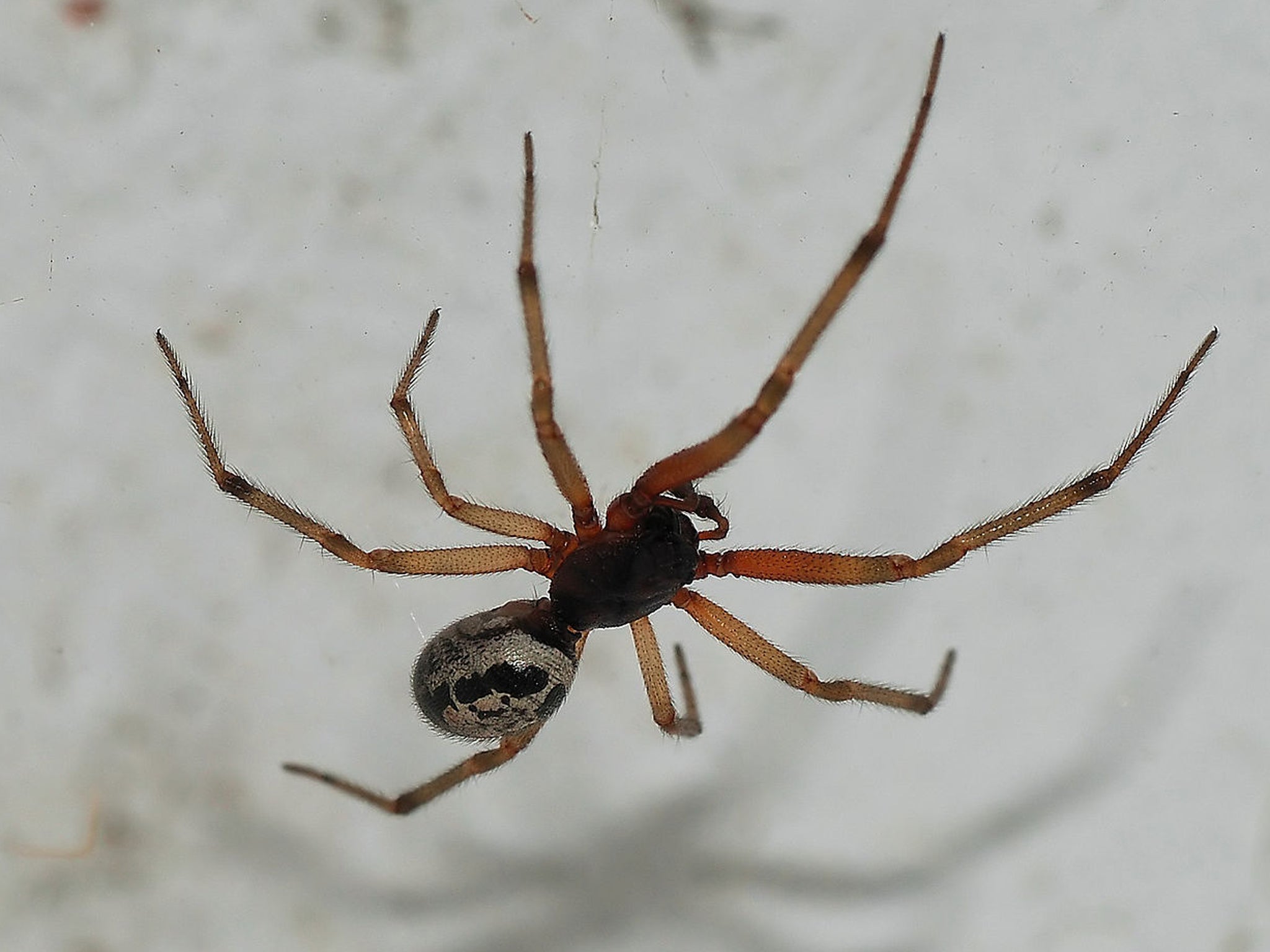Killer spiders on the loose - or not? A guide to the really quite harmless 'false widow'
No one in the UK has ever died as a result of a false widow bite. So, what are they, where do they come from and are they really dangerous?

Your support helps us to tell the story
From reproductive rights to climate change to Big Tech, The Independent is on the ground when the story is developing. Whether it's investigating the financials of Elon Musk's pro-Trump PAC or producing our latest documentary, 'The A Word', which shines a light on the American women fighting for reproductive rights, we know how important it is to parse out the facts from the messaging.
At such a critical moment in US history, we need reporters on the ground. Your donation allows us to keep sending journalists to speak to both sides of the story.
The Independent is trusted by Americans across the entire political spectrum. And unlike many other quality news outlets, we choose not to lock Americans out of our reporting and analysis with paywalls. We believe quality journalism should be available to everyone, paid for by those who can afford it.
Your support makes all the difference.For all the screaming headlines you'd think Britain was under siege from an army of killer arachnids hell-bent on biting every man, woman and child into crippling unremitting agony and possibly even death.
False widow spiders: they're out to get you.
But are they really?
False widow spiders belong to the group called Steatoda and are usually about the size of a 50 pence piece.
They are one of only twelve types of spider in the UK that bites (out of a total of 640 identified species).
They acquired their name because of their similarity to the black widow group of spiders, genus Latrodectus.
However, no one in the UK has ever died as a result of a false widow bite.
So, what are they, where do they come from and are they really dangerous? Here's our quick guide...
****
Where did they come from?
The false widow spider is thought to have first come to the UK over 100 years ago in crates of fruit from the Canary Islands.
Where could I see one?
The spider has been established in Devon for a long time but recently climate change has caused the population to spread across the south east.
The spider is likely to spread northwards in years to come, according to the Natural History Museum’s Insect Information Service (IIS).
This year there have been a wide range of reports in the regional and national press, relating tales of spider-related terror from South Wales, Nottingham, Kent, Essex, Shrewsbury, Hampshire and London.
Sightings north of Birmingham remain rare.
How would I identify a False Widow spider?
Steatoda nobilis can be identified by its bulbous midrift, brown markings and cream coloured belt. Its markings are sometimes compared to a skull.
Are they aggressive?
Nope, not really. "The spiders are non-aggressive and bite only in self-defence, such as when someone accidentally sits on them", says the Natural History Museum.
What is the likelihood I'll be bitten?
Low.
The Natural History Museum's Insect Information Service usually hears of about 10 cases of spider bites each year, although this year there would appear to be more.
They are still considerably less common than wasp or bee stings.
How can I avoid getting bitten?
In case you're really worried, Tony Wileman, a conservation ecologist at the London Wildlife Trust, has this advice: "Nearly all spider bites come from attempting to catch the spider so it is highly recommended that this is not undertaken. However, If you must remove the spider from your home, please capture it using a jar and a stick or pencil and try not to touch the spider with your hands."
How dangerous is the bite of a false widow spider?
Firstly, the bad news about the Black Widow spider, which is from the same family of spiders as the false widow (called Theridiidae). It has a bite 15 times stronger than a rattlesnake.
According to National Geographic: "In humans, bites produce muscle aches, nausea, and a paralysis of the diaphragm that can make breathing difficult".
Despite many people's expectations, however, most people who are bitten suffer no serious damage.
The false widow is, of course, considerably less dangerous.
Greg Hitchock, who is a conservation officer at the Kent Wildlife Trust for instance, told Your Local Guardian, that: "They are no more dangerous than eating a peanut. But quite often alarming headlines are used to draw people in."
Complications from the bites usually only occur if an individual is allergic to the venom.
What might happen if I'm bitten?
According to the Natural History Museum: "The severity of symptoms from any spider bite depends on the amount of venom that is injected.
False widow spider bite reports include symptoms such as chest pains, swelling and tingling of fingers."
The bite of the false widow spider can be 'medically significant' in humans, but usually without long-lasting effects.
What should I do if I get bitten?
Don't call 999 for a start.
Tony Wileman, a conservation ecologist at the London Wildlife Trust, says: "It is recommended that if bitten by a spider thought to be a false widow spider then medical attention (a visit to the A&E department or your local GP) should be sought informing the medical staff that you think you have been bitten by a false widow spider. Do not ring 999."
Treatment for a false widow bite normally involved the use of antihistamines.
Subscribe to Independent Premium to bookmark this article
Want to bookmark your favourite articles and stories to read or reference later? Start your Independent Premium subscription today.
Join our commenting forum
Join thought-provoking conversations, follow other Independent readers and see their replies
Comments